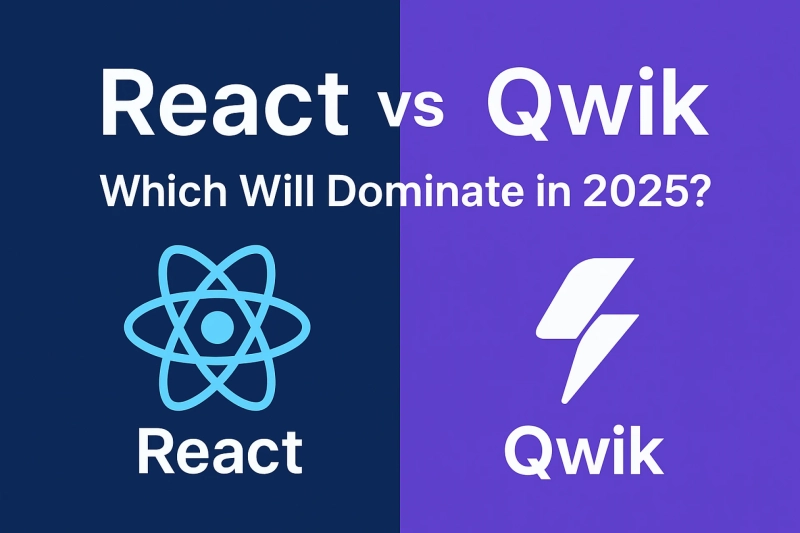As web apps become faster, more interactive, and resource-efficient, choosing the right framework has never been more critical. Two of the most talked-about frameworks in 2025 are React and Qwik both promising speed, scalability, and developer-friendly features. But which one is set to dominate the frontend landscape? Let’s dive in.
A Quick Overview
React
- Developed by Facebook (Meta), React has been a go-to library for building interactive UIs for years.
- Its component-based architecture, vast ecosystem, and strong community support make it highly reliable.
- React’s strengths lie in flexibility, robust tooling, and widespread adoption.
Qwik
- Qwik is a modern, emerging framework focused on instant loading and resumability.
- Unlike React, which hydrates the entire app, Qwik only loads and executes code when needed, drastically reducing time-to-interactive.
- Qwik is gaining attention for performance-first applications and modern web standards compliance.
Performance and Loading Speed
React:
- React apps often rely on hydration, which can cause slower initial loads, especially for large apps.
- Libraries like Next.js optimize server-side rendering (SSR) and incremental static regeneration (ISR) to improve speed, but performance tuning is often required.
Qwik:
- Qwik’s architecture is designed for instant loading. It only executes JavaScript when necessary, reducing overhead.
- Benchmarks show Qwik can outperform React in metrics like Time to Interactive (TTI) and Largest Contentful Paint (LCP), especially on complex web apps.
Developer Experience
React:
- Mature ecosystem with a wide range of libraries, plugins, and UI components.
- Strong community support and resources make onboarding easier for developers.
- Well-suited for both small projects and enterprise-grade applications.
Qwik:
- Still emerging, with fewer ready-made components and libraries.
- Requires learning new concepts like resumability and fine-grained lazy-loading, which may have a learning curve.
- Offers modern developer experience, especially for performance-first projects.
Use Cases
React is best for:
- Large-scale web applications with complex state management
- Projects that rely on community libraries and integrations
- Teams looking for long-term stability and widespread support
Qwik is best for:
- High-performance web apps where speed is critical
- Content-heavy websites that benefit from incremental hydration
- Developers prioritizing first paint and instant interactivity
The Ecosystem Factor
React’s massive adoption ensures it will remain a safe bet for enterprises. Its ecosystem including Next.js, Remix, and a vast array of third-party libraries that provides solutions for almost any challenge.
Qwik, though newer, is catching the eye of developers building next-gen web apps, and its performance-first approach could make it the preferred choice for high-speed web experiences.
Conclusion: Which Will Dominate in 2025?
- React remains the safe, reliable choice with unparalleled community support and flexibility.
- Qwik offers a glimpse into the future of web development blazing-fast, performance-first, and optimized for modern web standards.
The truth is, both frameworks will coexist. React will continue to power large-scale and enterprise applications, while Qwik will carve a niche for high-performance, next-gen web experiences.
The real winner? Developers and businesses who choose the framework that best fits their project needs like speed, scalability, and future-readiness are all up for grabs in 2025.


